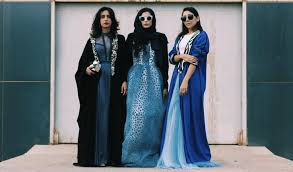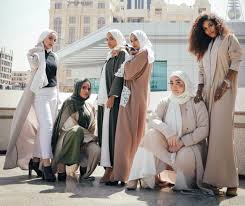Mauritania’s history, in similar fashion to that of many other African countries, is one characterized by conflict. The country is making strides toward a stable democratic society and their culture is a wonderful amalgamation of regional and international influences which are noticeable in many aspects of daily life.
History
The Berbers were some of the first people to inhabit the northern Saharan region which is now known as Mauritania. In fact, the country’s name comes from the Berber language. They descended on the land from north Africa in the 3rd century and the Arab population followed in the 8th century.
For the next 500 years, the country remained one of the most important trading grounds in the Sub-Saharan region. The Almoravid Empire controlled the area during the 11 and 12th centuries including the trade of slaves, gold and salt, making the dynasty extremely powerful.
The early 19th century saw the arrival of the French who had other interests in West Africa. Mauritania was treated differently than other French colonies, however, as it was not subject to direct rule, but controlled by proxy through Islamic leaders. It is this difference, many argue, that helped to preserve much of the country’s traditional culture and way of life.
The post-WWII world saw a flurry of changes, including a wave of decolonization that swept across the African continent. West African was granted independence, including Mauritania, which received full freedom from France in 1960. Independence did not bring peace, however, as a dispute between Mauritania, Algeria and Morocco came to a head during the Saharan War in 1975, when Mauritania invaded and captured one-third of the Western Saharan area. After several coup d’états, the country returned to a relatively stable democracy in 2007. Years of conflict and political turmoil have left the nation in economically troubling condition.
Culture
Mauritania’s culture is a mixture of many influences, both indigenous and external from the ancient Berber people, the Moors and the French, especially visible in both music and cuisine.

Mauritanian music is a tradition carried down by the Moors when musicians formed the lowest rung of society and performed for anyone who paid them. Today, the industry is more refined, but the use of Moor instruments such as the four-stringed lute and the kettle drum remain firmly intact.
In a similar fashion, Mauritanian cuisine can be seen as an amalgamation of several influences. While many dishes and ingredients like dried meats, grilled goat, sheep and couscous clearly highlight Berber and Moorish contributions, there are also more modern interpretations like baked goods and French pastries.
Traditional dress
The Mauritanian Traditional dress is consisted of light clothing to protect the people against the sun and as well as the sand storms. The women traditional dress in Mauritania is called “Melahfa”. The men traditional dress is called “Daraa” (or a boubou), and they wear it with, sandals made from gazelle skin. Most of the Mauritania women also use Melhafa not only as a traditional dress; they also use it to cover their hair, because of religious reasons. The Daraas are mostly blue, black or white and they are perfect when the weather gets very hot, because the wide cloth allows air to move around.
Our discovery of people around the world brings us to Mauritania. Mauritania is that land, strewn between North Africa and Sub-Saharan Africa, where arabe and Berber cultures intermix. A trip to Sahel where the colors white and blue of boubou fill us with wonder.
Dress code dictated by climate

Arid climate, hot winds and cold nights, the mauritanian traditional suit is tinged by climate-related-natural hazards. Everyday life in the desert needs adaptation because of skin mistreating. So in order to protect themselves from those skin trouble, mauritanian people have got well-reasoned traditional suit : saroual, boubou, and turban. Ideal hightlight against sun and winds.
Moorish boubou, or Draa
Mauritanian people are very attached to their traditional boubou even if they live in the city. In no way they would give their boubou up.
What is a boubou ?

Decorated with golden and white embroidery, Moorish boubou or Drâa is a kind of long sheet with a hole in order to let the passage of the head, with two large opened sleeves in each side. In summer time, when it is very hot, sleeves can be rolled up until shoulders. Pockets are sewed in each side to allow men to put their personal effects in. Boubou can be worn on top of a saroual and/or a tunic.
Everyone should have a boubou

It is embroidery, colors, and fabric in which boubou is cut that will set everybody’s social scale. People with the lowest means will content themselves with a simple cotton-made Drâa when the people with highest economic background will wear Bazin damask boubou. This fabric is characterized by stiffness, brightness and expensive costs.
From silk to cotton
At the origin of boubou, it was sewed in silk, but as Isla forbids wearing silk for men, we can, now, find Moorish boubou made of cotton or synthetic material. The same result, as silk, is much in demand.
Sarouel
Introduced in Africa by Persian invasion, sarouel is representative of african trousers. Fresh, aerated, black, white and blue,Mauritanian people love to wear it under their boubou. Mauritanian sarouel goes with a leather black belt which goes outside trousers, and is very soft and fresh to wear, especially during summer time.
Turban

Turban, also called cheche or “haouli”, is a long rectangular sheet of 3.5 to 5 meters long. Just like boubou, it is, without doubt, an important piece of the traditional mauritanian suit. Much more than just an accessory, cheche is essential to protect oneself from sun’s heat and sand storms.The moor covers his face with it in order to protect his skin and eyes.
Even if mauritanian youth turns to western fashion, boubou keeps on being a clothe very popular in the country. Wedding days, religious feasts and celebrations, mauritanian drâa is still attractive.By the way, it has seduced neighbouring countries.Just stay tuned, we talk about it in the next post.
Dress


Legs: Both men and women must always cover their legs. There are exceptions for when you are participating in sports for men in all cultures, and women mostly just in the South. For sports, it is acceptable for men to wear what you would consider to be normal athletic shorts – usually for soccer. When I’ve been out running, I’ve seen other Mauritanian runners (only men), but I have never seen anyone in the short running shorts that runners wear. I saw women in Rosso who wore shorts to play basketball (what you would think of regular basketball shorts), but the shortest is just above the knees. Apart from sports, it is unacceptable to see the outline of a woman’s leg generally speaking. That means obviously no pants, but also you must be very careful to make sure that you can’t see the outline of your legs through your dress at all. So, you’ll see women double layering and wearing slips often. For men, it is acceptable to wear a very baggy pant that almost looks like a skirt that goes to just below the knees. It is however then accompanied by a boubou, which is basically a king sized bed sheet draped over you.


Women and heads: Women generally speaking always cover their heads once they reach puberty. In Rosso, there were some women who bent the rules, but I think this was mostly due to the liberal atmosphere and proximity to Senegal. Here in the North, I always cover my head.
The torso: In general, one should cover their sholders (both men and women). However, on very hot days, I’ve seen men walking around with no shirt under their boubou, and some women in the South will wear cover only a little of their shoulders. Around the house (not on the street) both men and women may walk around topless. This is only for when they are working in the house with only family present.


Moor dress: Women will wear what is called the veil in English, in Hassaniya: the Mulafa. It is a 6yd long piece of fabric that is wrapped around the body and then around again to cover the head. Generally women do not cover their faces, unless it is very windy when it is best to cover up to avoid getting sand everywhere. Underneath this women will traditionally wear a full length skirt as well to make sure you can’t see their legs. With the younger generation we’re starting to see young girls wearing jeans and such underneath the mulafa, however that is not mainstream. The traditional dress for men is the kafta and boubou. These are the shorter baggy pants with the big sheet. They will usually wear a t-shirt (with sleeves) underneath. It is becoming very acceptable for men to wear “western style” clothing as well, especially in cities.


Other cultures: Unlike the Moor population, these cultures will use a tailor to make their clothes. Women will wear what is called a “complete” meaning a shirt, skirt, and head piece. All the pieces are made from the same brightly colored fabric, but separate from each other. Men will also wear very brightly colored clothing. They have a boubou that is apparently different from the Moor boubou, but I can’t tell a difference (but I also haven’t seen many non-Moors wearing a boubou). Men will very often wear either western dress (jeans and a t-shirt) or what we like to call the pajama outfit. It’s just pants and a long-sleeved shirt made out of brightly colored fabric. Many times they will have the tailors embroider fancy designs on this outfit to make it very dressy.
Reference-
https://www.iexplore.com/articles/travel-guides/africa/mauritania/history-and-culture#:~:text=Mauritania’s%20culture%20is%20a%20mixture,in%20both%20music%20and%20cuisine.https://www.iexplore.com/articles/travel-guides/africa/mauritania/history-and-culture#:~:text=Mauritania’s%20culture%20is%20a%20mixture,in%20both%20music%20and%20cuisine.
http://learnmauritania.blogspot.com/2008/09/dress.html
https://www.custom-qamis.com/en/blog//traditional-dress-of-mauritania./
By Nidhi Singh

